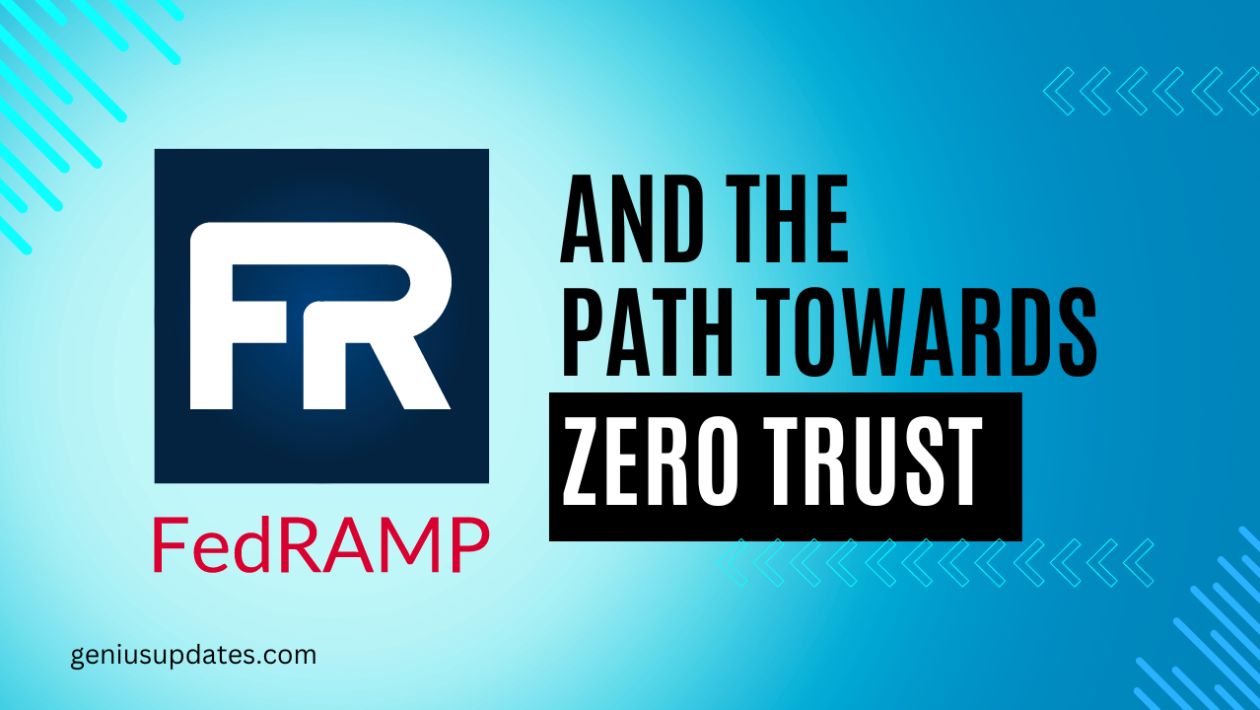Organizations are increasingly reliant on cloud services and interconnected systems, so ensuring the security of sensitive data and critical infrastructure has become a paramount concern. The Federal Risk and Authorization Management Program (FedRAMP) and the concept of Zero Trust Architecture (ZTA) have emerged as key strategies to address these challenges.
In this article, we will delve into the world of FedRAMP and explore the journey toward implementing Zero Trust Architecture to enhance cybersecurity and protect valuable assets in a globalized world.
Table of Contents
FedRAMP: A Brief Overview
The Federal Risk and Authorization Management Program (FedRAMP) is a U.S. government-wide program that standardizes the security assessment, authorization, and continuous monitoring processes for cloud products and services.
Initiated in 2011, FedRAMP was created to establish a consistent and streamlined approach to assessing the security posture of cloud solutions used by federal agencies, thereby reducing duplication of efforts and promoting cost savings. The primary goals of FedRAMP include:
Enhancing security: FedRAMP ensures that cloud services meet stringent security standards and controls, reducing the risk of data breaches, cyberattacks, and unauthorized access.
Promoting consistency: By establishing a unified framework for assessing cloud security, FedRAMP simplifies the process for federal agencies to evaluate and select cloud solutions that align with their security requirements.
Reducing costs and inefficiencies: FedRAMP eliminates the need for agencies to perform redundant security assessments, resulting in significant cost savings and improved efficiency.
Encouraging innovation: Cloud service providers are motivated to meet FedRAMP requirements, fostering a culture of continuous improvement and innovation in cloud security.
The Journey to Zero Trust Architecture
The traditional security perimeter, once formed by firewalls and other network defenses, has become obsolete in today’s interconnected and dynamic computing environment. Zero Trust Architecture (ZTA) is a security approach that challenges the notion of trusting entities based solely on their location within or outside a network perimeter.
Instead, ZTA focuses on strict access controls, continuous monitoring, and assuming that threats may exist both inside and outside the perimeter. Key principles of Zero Trust Architecture include:
Least privilege access: Users and devices are granted the minimum level of access required to perform their tasks. This principle limits potential damage in case of a security breach.
Micro-segmentation: Network segments are divided into smaller, isolated zones, reducing the lateral movement of attackers within the network.
Continuous monitoring: Systems and network traffic are constantly monitored for anomalies and potential threats, enabling rapid response to any suspicious activity.
Multi-factor authentication (MFA): Users are required to provide multiple forms of authentication before accessing sensitive resources, adding an extra layer of security.
Encryption: Data is encrypted both in transit and at rest to protect it from interception and unauthorized access.
Identity and access management (IAM): Comprehensive identity management solutions ensure that only authorized individuals or devices can access specific resources.
FedRAMP and Zero Trust: A Synergistic Approach
While FedRAMP and Zero Trust Architecture are distinct concepts, they complement each other to provide a comprehensive cybersecurity strategy. FedRAMP ensures that cloud services adhere to rigorous security standards, making them viable candidates for integration into a Zero Trust environment.
Conversely, Zero Trust principles enhance the security of cloud services by enforcing strict access controls, continuous monitoring, and segmentation. The synergy between FedRAMP and Zero Trust can be seen in several areas:
Cloud Service Providers (CSPs): Cloud services that are FedRAMP compliant have already undergone rigorous security assessments. These services can seamlessly fit into a Zero Trust architecture, where access is granted based on the principle of least privilege.
Continuous Monitoring: Both FedRAMP and Zero Trust emphasize continuous monitoring of systems and network traffic. This ensures that any deviations from the norm are quickly detected and addressed, reducing the risk of data breaches.
Data Protection: FedRAMP’s encryption requirements align with Zero Trust’s emphasis on securing data both in transit and at rest. This ensures that sensitive information remains confidential and protected from unauthorized access.
Identity Management: Zero Trust relies heavily on robust identity and access management solutions, which are also integral to FedRAMP compliance. Proper authentication and authorization mechanisms ensure that only authorized users access cloud resources.
Micro-Segmentation: Zero Trust’s micro-segmentation aligns with the concept of compartmentalizing data and resources, reducing the lateral movement of attackers within a network – a principle emphasized by FedRAMP.
Also check out, 7 Cybersecurity Solutions for Protecting Business Data and Systems
Challenges and Considerations
While the journey to Zero Trust Architecture supported by FedRAMP is promising, it’s important to acknowledge potential challenges and considerations:
Implementation Complexity: Both FedRAMP and Zero Trust require careful planning, implementation, and ongoing maintenance. Organizations may need to invest time and resources to ensure successful adoption.
Cultural Shift: Embracing a Zero Trust mindset involves a cultural shift in how organizations approach security. This shift requires buy-in from leadership and staff at all levels.
Legacy Systems: Organizations with legacy systems may face challenges when implementing Zero Trust principles. Integration with older infrastructure may require additional effort.
Balancing Security and Usability: Striking a balance between stringent security measures and user convenience is crucial. Overly complex security protocols may hinder user productivity.
Conclusion
In an era characterized by relentless cyber threats and the rapid adoption of cloud technologies, FedRAMP and Zero Trust Architecture have emerged as essential tools to fortify cybersecurity defenses. FedRAMP’s standardized approach to cloud security complements the principles of Zero Trust, which challenges traditional notions of trust and emphasizes strict access controls and continuous monitoring.
As organizations embark on their journey towards Zero Trust Architecture, supported by FedRAMP-compliant cloud services, they must navigate challenges while reaping the benefits of enhanced data protection reduced risk exposure, and a more agile and resilient cybersecurity posture. By embracing the synergy between FedRAMP and Zero Trust, organizations can pave the way for a safer and more secure digital future.
About Author

My name is Manpreet and I am the Content Manager at Scrut Automation, one of the leading risk observability and compliance automation SaaS platforms. I make a living creating content regarding cybersecurity and information security.
Manpreet can be reached online at [email protected] and at our company website https://www.scrut.io/





